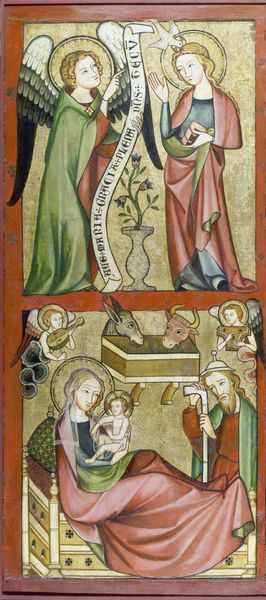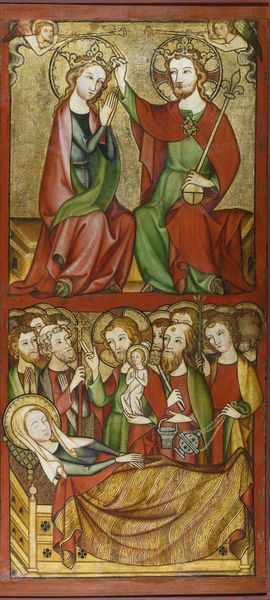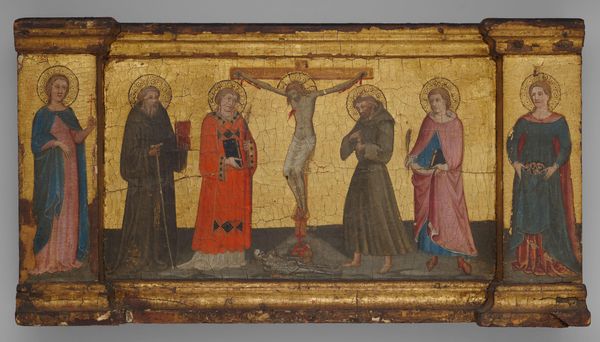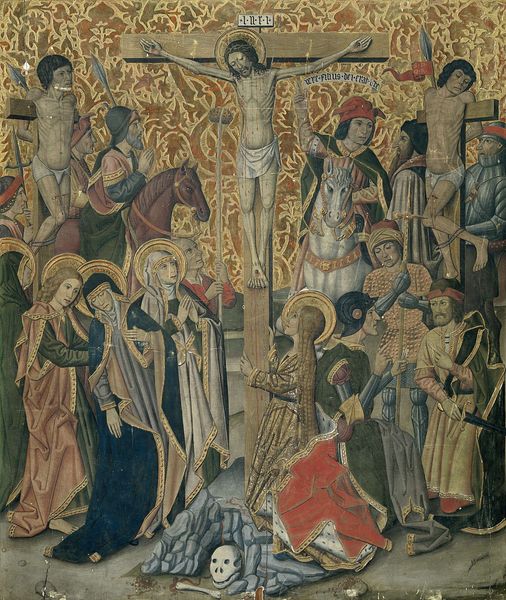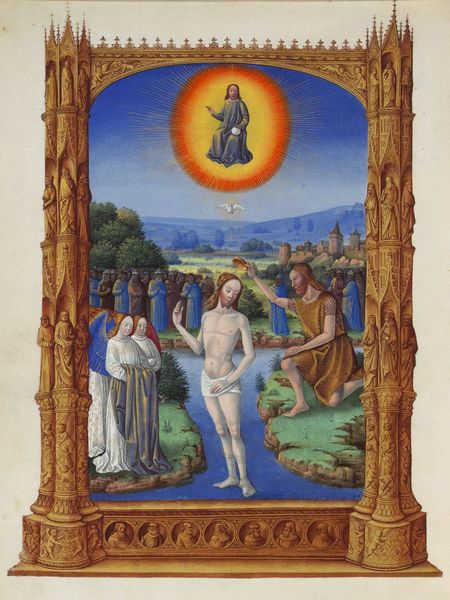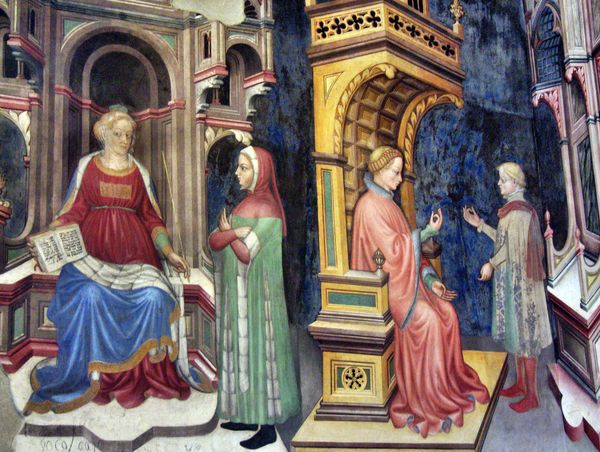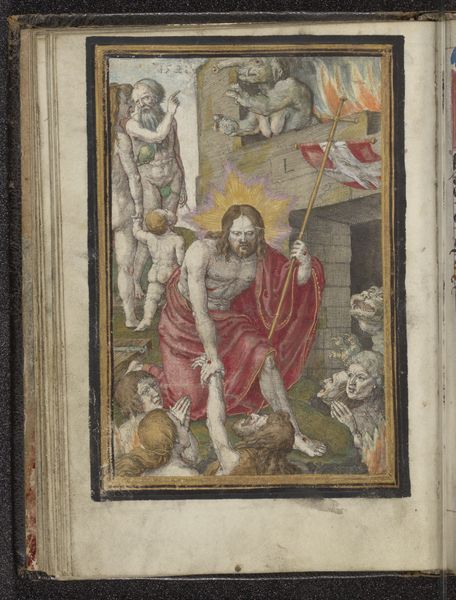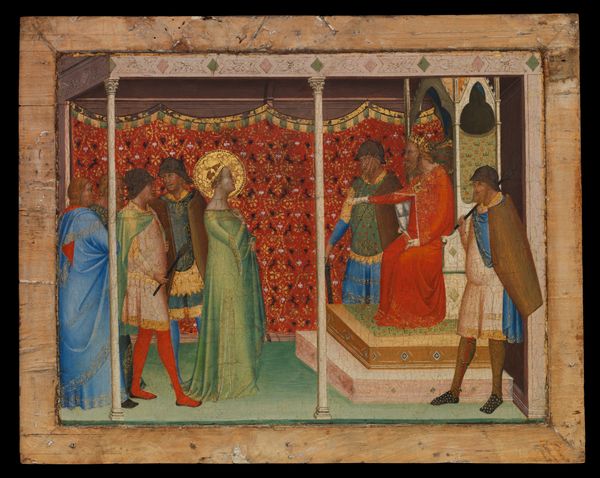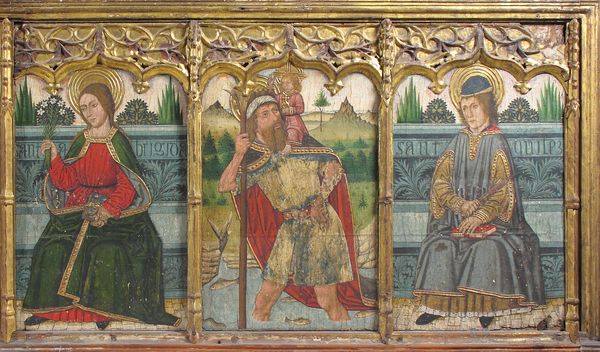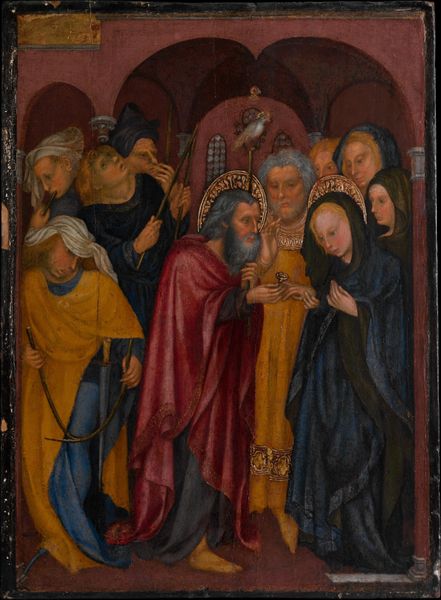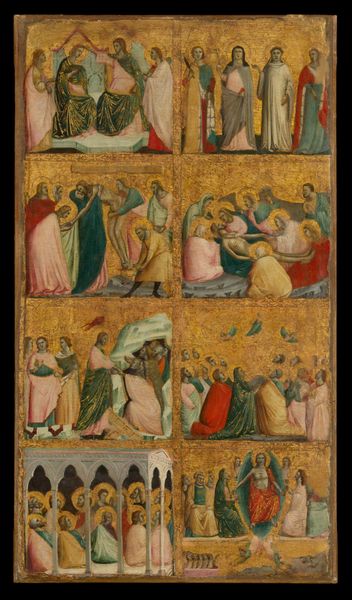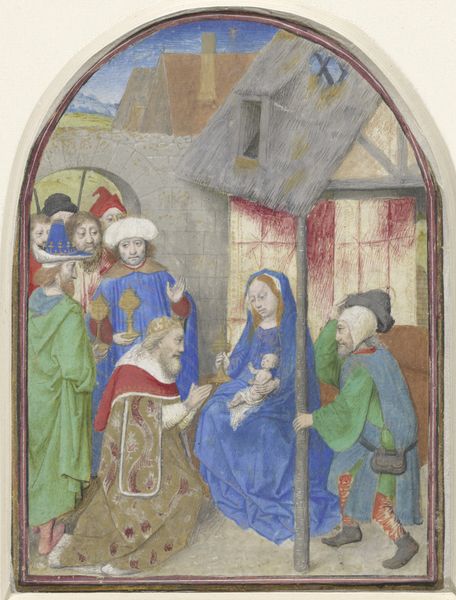
panel, tempera, painting
#
panel
#
narrative-art
#
tempera
#
painting
#
landscape
#
figuration
#
oil painting
#
men
#
history-painting
#
academic-art
#
italian-renaissance
#
angel
#
christ
Dimensions: 59 1/2 x 28 5/8 in. (151.1 x 72.7 cm) Entire Retable: 139 x100 in. (353.1 x 254 cm)
Copyright: Public Domain
Editor: This is a panel from the Saint John Retable, made between 1464 and 1507 by Domingo Ram. It’s tempera on wood, and it feels quite solemn. What stands out to you? Curator: I'm drawn to the division of space. The upper register depicts a serene baptism scene, while the lower half presents Salome with the head of John the Baptist. This juxtaposition invites us to consider the artwork within the context of power, gender, and religious authority in the late 15th century. Do you notice the subtle ways in which women are portrayed differently across the two scenes? Editor: Yes, in the first scene, they're angels, seemingly passive observers, whereas Salome is central to a rather gruesome event. It feels like there's a comment on their roles. Curator: Precisely! Consider also the artistic choices, such as the use of light and color to emphasize certain figures or actions. The gold halos, for example, underscore the figures’ sanctity, but what sociopolitical function does this visual strategy serve? Editor: Maybe to reinforce the power and divine right associated with the church and monarchy at the time? It makes you wonder how much these artistic representations shaped people's perceptions. Curator: Exactly. And thinking about that, how does reflecting on art history help us see the contemporary power structures differently today? Editor: It gives us a critical lens to analyze how societal norms and biases get subtly encoded and reinforced. It definitely helps us recognize them. Curator: I agree. This work reveals not just religious narrative but complex power dynamics, the negotiation of gender roles, and the ever-present dialogue between image and ideology.
Comments
No comments
Be the first to comment and join the conversation on the ultimate creative platform.
